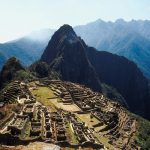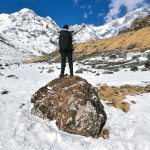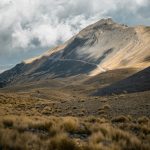Table of Contents
Everyone knows about the classic Inca Trail, but here’s what seasoned guides won’t tell you: it’s not even the best route to Machu Picchu. While tourists crowd the traditional path, ancient stone highways to the lost city remain virtually untouched and they are the best way for exploring the Inca trail.
The Salkantay Trek: The Path Through the Sky
Don’t let the name fool you – this isn’t just another mountain trail. The Salkantay route takes you past a 20,500-foot peak the Incas considered sacred, where snow leopards still roam. The best part? Unlike the classic trail, you don’t need to book months in advance.
The route passes through 15 different ecosystems, from glaciers to cloud forests. You’ll cross a 15,000-foot pass where ancient priests made offerings to the mountain gods, then descend into valleys where coffee farmers grow some of the world’s most expensive beans. Luxury lodges along the way mean you can experience this wilderness without roughing it.
Choquequirao: The True Lost City
While everyone else heads to Machu Picchu, you could have an entire Inca city to yourself. Choquequirao is bigger than Machu Picchu but gets only 1% of the visitors. Why? Because the only way in is a challenging trek through the Apurimac Canyon.
The reward? Massive stone terraces decorated with white llama figures, temples that align perfectly with celestial events, and zero crowds. Recent discoveries suggest Choquequirao was Machu Picchu’s sister city, possibly connected by a now-lost network of trails.
The Lares Adventure: Living History
The Lares route isn’t just a trek – it’s a journey through communities that still live much as their Inca ancestors did. You’ll pass villages where people weave textiles using techniques unchanged for centuries and speak Quechua as their first language.
This trail takes you through high-altitude hot springs, past turquoise lakes, and through valleys dotted with wild alpacas. Local families often invite trekkers to participate in traditional ceremonies, offering a glimpse into Andean spirituality that most tourists never see.
The Vilcabamba Trail: The Last Inca Refuge
This is the path the last Inca rulers took when fleeing the Spanish. It leads to Espiritu Pampa, the final capital of the Inca resistance. The trail passes through dense jungle where archaeologists are still discovering new ruins.
Unlike other routes, this one requires a machete in places. You’ll need a good guide – but you’ll be walking through history, following the exact steps of the last independent Inca rulers. The ruins along the way are still being excavated, and you might just witness discoveries being made.
The Moonstone Trek: Hidden Mysteries
Named after a massive carved stone along the route, this trail sees maybe a dozen trekkers a year. It passes through high-altitude meadows where ancient astronomical observatories still stand, their purpose not fully understood.
The trek takes you through remote villages where locals still leave offerings at Inca shrines, past mountain lakes that locals say have magical properties, and along stone paths that haven’t been restored – you’re seeing them exactly as they were hundreds of years ago.
Planning Your Alternative Trek
While these routes offer incredible experiences, they require more planning than the classic trail:
- Best Times: The dry season (May-October) is ideal, but shoulder seasons (April and November) offer unique advantages – flowers in bloom and fewer people
- Altitude Considerations: All routes reach significant heights. Spend at least 2-3 days in Cusco acclimating
- Guide Selection: For these routes, you want someone who knows the archaeological sites and local communities, not just the path
Local Connections
These alternative routes often bring you into contact with communities that rarely see outsiders. A few tips for respectful interaction:
- Learn basic Quechua greetings
- Always ask before taking photos
- Consider bringing small gifts (school supplies are always welcome)
- Be prepared to share meals if invited – it’s considered rude to refuse
The Archaeological Advantage
While everyone crowds Machu Picchu, these routes let you explore lesser-known but equally impressive sites:
- Vitcos: An Inca administrative center with some of the finest stonework in Peru
- Ñusta Hispana: A mysterious site that might have been a temple to the moon
- Pumamarca: Terraces that are still used for agriculture today
Physical Preparation
These routes can be more challenging than the classic trail. You should be comfortable with:
- Long days of hiking (6-8 hours)
- High altitudes (up to 15,000 feet)
- Varying weather conditions
- Basic camping (unless choosing lodge-based options)
Conservation and Responsibility
These routes pass through fragile ecosystems and traditional communities. Responsible trekking means:
- Using established campsites
- Packing out all waste
- Supporting local guides and porters
- Respecting traditional customs and sacred sites
The Future of These Trails
As the classic Inca Trail becomes increasingly regulated, these alternative routes are gaining popularity. Some are being developed with sustainable tourism in mind:
- New eco-lodges are being built
- Local communities are being trained as guides
- Archaeological sites are being restored
- Trail infrastructure is being improved
Making Your Choice
Each alternative route offers something unique:
- Salkantay: Best for dramatic mountain scenery
- Choquequirao: Perfect for those seeking solitude and archaeology
- Lares: Ideal for cultural immersion
- Vilcabamba: Great for adventure and history buffs
- Moonstone: Best for those wanting a truly off-the-beaten-path experience
Looking Ahead
As tourism patterns change, these alternative routes offer a glimpse into the future of Inca Trail trekking – more sustainable, more engaging with local communities, and more focused on comprehensive historical understanding rather than just reaching Machu Picchu.
The Real Value
While reaching Machu Picchu is still incredible, these alternative routes offer something more valuable – a chance to experience the Inca world as it was, and as it continues to be in the living cultures of the Andes. They’re not just trails; they’re time machines, offering a window into both past and present that the classic route, with its crowds and rigid regulations, can no longer provide.
These paths remind us that the Inca empire was vast and complex and that Machu Picchu, magnificent as it is, is just one small part of a much larger story waiting to be discovered by those willing to step off the beaten path.

I’m Garrett, a seasoned photojournalist with a passion for uncovering the world’s hidden treasures. My journey is fueled by a deep curiosity for diverse cultures and breathtaking landscapes. When I’m not behind the lens capturing the world’s wonders, you can find me exploring underwater realms or sharing my passion for discovery with my two adventurous children.




